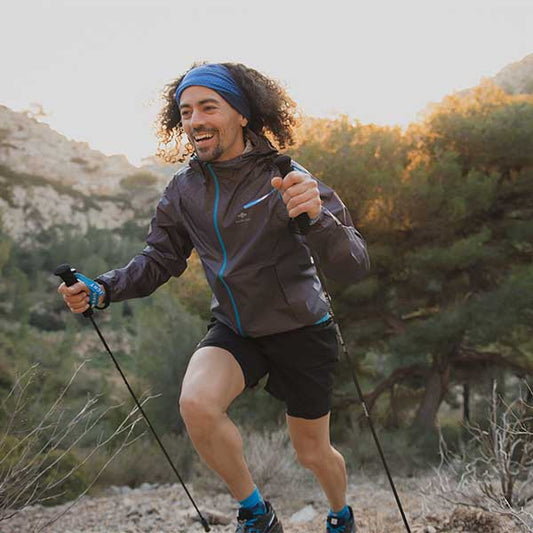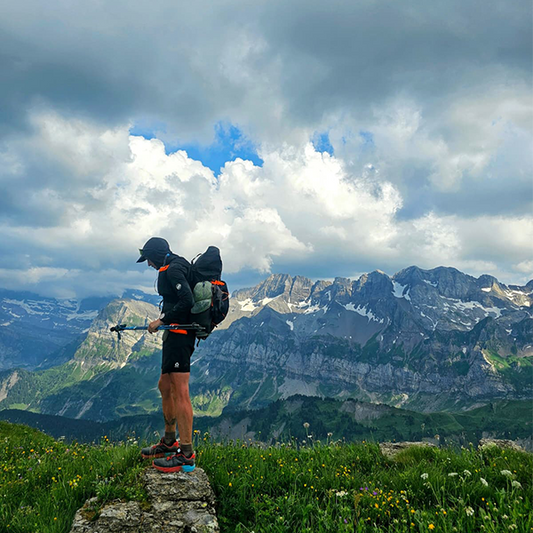Trail running poles can become valuable allies for saving energy, climbing more efficiently, and securing technical descents. But only if used correctly! Here are the essential basics to make the most of this tool during your trail outings or races.
Getting Started with Trail Running Poles
Before even hitting the trails, it’s essential to check these three elements:
- Pole height: your poles should be suited to your body type. A simple rule: your elbow should form a 90° angle when you hold the pole vertically on flat ground. That’s why we offer different sizes for non-telescopic poles.
- Hand position: poles are equipped with straps. Don't hold them like in alpine skiing, but like in cross-country skiing — insert your hand from below through the strap to ensure a good force transfer from your arm to the pole while keeping your hand relaxed.
- Arm/leg synchronization: avoid desynchronized or stiff movements. Trail running is about endurance; the goal is to find a smooth rhythm that matches your stride without forcing.
Still wondering if poles are really necessary? Our article Why Use Trail Poles might shed some light.
Using Trail Poles on the Climb
Climbs are where poles shine the most. But choosing the right technique depends on the slope and your level of fatigue.
Alternating Push
This is the most natural technique: you move one arm forward at the same time as the opposite leg. It works well on moderate slopes and helps maintain a good pace while saving your legs.
Simultaneous Push
Here, both poles are planted at the same time to create a powerful push. Ideal for very steep climbs or to regain momentum after a tight turn. This technique requires more upper body engagement.
The Gallop
Often used in ultras or long climbs, the gallop involves pushing for two or three steps without moving your arms, then repositioning the poles for a short but effective push. It’s a fluid and energy-saving method.
Tip : sync your breathing with the pushes. It helps stabilize your effort and maintain a steady pace, even in the tough sections.
Using Poles on the Descent
Descents require different skills, but trail poles can once again play a key role.
Preserving Energy
By absorbing muscle shocks in the thighs using your arms, you relieve your quadriceps. To do this, place your poles slightly forward and to the sides, keeping your arms relaxed without pressing down hard. The idea isn’t to brake, but to “channel” your descent.
Staying Safe
Poles help you maintain balance, especially on technical descents, scree, or root-covered trails. You can also lean lightly on them to cross an obstacle, absorb a jump, or recover after a slip. When used well, they provide real stability on unstable terrain.
In Summary: mastering pole use isn’t just about planting them in the ground. It’s about knowing when, how, and why to use them depending on the terrain, your effort, and your technique.
Final and essential tip: like any tool, you need to use them in training to build the right muscles so the movement becomes natural for race day.












1 comment
Très bon article sur l’emploi des bâtons. Je me permets une petite remarque : en descente je ne passe jamais les dragonnes. Dangereux pour les poignets en cas de mauvaise stabilisation et qu’on essaie d’enrayer une chute.